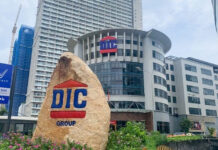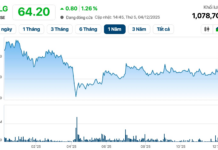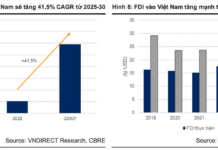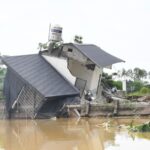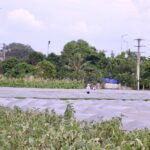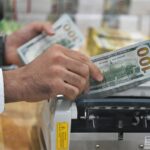
Prime Minister Pham Minh Chinh inspects damage and directs urgent measures to overcome the consequences of Storm No. 3 in Quang Ninh – Photo: VGP/Nhat Bac
|
Vietnam’s impressive economic growth of 6.93% in Q2 2024, higher than the 5.66% growth in Q1 2024, provides a solid foundation for our confidence in a new economic miracle in 2024. This sentiment is shared by economic organizations in their assessment of our country’s economy.
At the beginning of July 2024, at the workshop “Vietnam’s Economy in the First 6 Months and Prospects for the Whole Year of 2024: New Drivers for Quality Growth,” the Central Institute for Economic Management (CIEM) presented two macroeconomic forecasts for 2024. Accordingly, in the first scenario, GDP growth is expected to reach 6.55%, with exports for the year projected to increase by 9.54%, and a trade surplus of 5.7 billion USD. In the second scenario, GDP growth is forecast at 6.95%, with exports rising by 11.64% and a trade surplus of 7.3 billion USD.
Meanwhile, in mid-July 2024, the ASEAN+3 Macroeconomic Research Office adjusted its economic growth forecast for Vietnam in 2024 to 6.3%, the highest in the ASEAN bloc. From the perspective of the World Bank, in its latest report released at the end of August 2024, Vietnam’s economy is projected to grow by 6.1% in 2024 and 6.5% in 2025 and 2026.
The determination to achieve high growth in Q3 and Q4 2024, striving to reach the upper threshold of the GDP growth target set by the National Assembly, has been consistently conveyed in conferences and directives on economic and social development by Prime Minister Pham Minh Chinh. The Q2 2024 economic results and the achievements in the first two months of Q3 2024 demonstrate that this determination has been translated into effective actions and directives.
In July and August 2024, industrial production continued its positive trend. The industrial production index in July and August increased by 11.2% and 9.5%, respectively. After eight months of 2024, this index rose by 8.6%, with the processing and manufacturing industry increasing by 9.7%.
Exports remain a bright spot for the entire economy, with total import and export turnover of goods reaching a preliminary figure of 511.11 billion USD in the first eight months, up 16.7% compared to the same period last year. Exports increased by 15.8%, imports by 17.7%, and the trade surplus was estimated at 19.07 billion USD.
Notably, the recovery trend of businesses continued in July and August.
According to the General Statistics Office, in the first eight months of 2024, 168,100 businesses entered the market, higher than the number of businesses leaving the market, which was 135,300.
If the Vietnamese economy achieves a growth rate of 6.5-7% in Q3 2024, according to an economic expert, to attain a GDP growth rate of 6.5% for the whole year, Q4 2024 growth should reach about 6.2%.
Before the occurrence of Typhoon Yagi, this task was relatively feasible. The Purchasing Managers’ Index (PMI) reached 54.7 points in July and 52.4 points in August, indicating that the manufacturing sector was still expanding healthily. Following the usual pattern, export orders will continue to be abundant in Q4 to cater to the year-end holidays in 2024 and early 2025. Therefore, it is likely that exports will remain favorable, with the PMI from September to the end of the year being higher than the average.
Regarding public investment, according to the Ministry of Finance, from the beginning of the year to August 31, 2024, the disbursement of public investment capital reached 274,501 billion VND, equivalent to 37.01% of the plan and 40.49% of the plan assigned by the Prime Minister. Typically, the disbursement pace of public investment accelerates in the last months of the year. With the close direction and strong determination of the Government, public investment is sure to be one of the critical drivers of Vietnam’s economic growth from now until the end of 2024.
However, Super Typhoon Yagi has caused severe damage. The Ministry of Planning and Investment estimates that Yagi caused 40 trillion VND in losses for the northern provinces, resulting in a 0.15% decrease in GDP compared to the previous scenario.

Regarding growth drivers in the coming months, Dr. Nguyen Tri Hieu agreed that public investment is one of the key factors supporting economic growth – Photo: VGP/Hoang Hanh
|
Great Determination of the Government
According to the Ministry of Planning and Investment, Storm No. 3 and its aftermath affected 26 northern provinces and Thanh Hoa province. These localities account for over 41% of GDP and 40% of the country’s population. Hai Phong, one of the two localities severely affected by Typhoon Yagi, suffered losses of 10,820 billion VND, equivalent to one-tenth of the city’s total budget revenue in 2023. Quang Ninh, where the storm made landfall, incurred damages of about 23,770 billion VND.
“The growth rate in the last six months of the year for the whole country and many localities is expected to slow down,” said Minister of Planning and Investment Nguyen Chi Dung. He added that GDP growth in Q3 could decrease by 0.35%, and Q4 could be 0.22% lower than the scenario without Typhoon Yagi.
For the whole year, GDP may decrease by 0.15% compared to the growth scenario presented at the end of Q2 (6.8-7%). Specifically, the agriculture, forestry, and fishery sector is expected to decrease by 0.33%, industry and construction by 0.05%, and services by 0.22%.
The GRDP of many severely affected localities, such as Hai Phong, Quang Ninh, Thai Nguyen, and Lao Cai, may decline by over 0.5% this year.
However, at the conference on September 15, Prime Minister Pham Minh Chinh instructed to promptly restore production and business activities, control inflation, and strive for a GDP growth rate of about 7% for the whole year. He also assigned the Ministry of Planning and Investment and relevant agencies to build and implement a program to overcome the consequences of storms and floods and promote production and business recovery and growth.
The Prime Minister also outlined specific tasks and solutions, with the first priority being to promote the disbursement of public investment capital and national target programs and restructure production and business activities suitable to the situation of each locality. He also emphasized the need to continue diversifying markets, products, and supply chains.
According to Dr. Nguyen Tri Hieu, a financial and economic expert, this demonstrates the great determination of the Government, as the factor of Typhoon Yagi needs to be considered in achieving the GDP growth target for 2024. The recent storm has caused significant damage to the northern provinces, affecting infrastructure, production and business establishments, and inflicting severe losses on agricultural and horticultural areas. Recovering these affected areas will require a significant amount of budget and resources.
“According to the World Bank, climate change and natural disasters could cause losses of up to 13% of Vietnam’s GDP by 2030. Typhoon Yagi will have certain negative impacts on GDP growth in Q3 2024 and the whole year. We will need to make more efforts,” said Dr. Nguyen Tri Hieu.
Regarding growth drivers in the coming months, Dr. Nguyen Tri Hieu agreed that public investment is one of the key factors supporting economic growth. In addition to reinvesting in infrastructure damaged by Typhoon Yagi, public investment should focus on important projects with a spillover effect, laying the foundation for the development of the economy in 2025 and subsequent years.
The financial and economic expert also noted that another urgent task is to support the full recovery of the private sector, especially small and medium-sized enterprises, by continuing to strongly reform administrative procedures, reducing costs for businesses, and enhancing access to credit with reasonable interest rates. These are also the key tasks that the Government and the Prime Minister have been strongly directing.
“In September 2024, the Fed is likely to initiate an interest rate cut. This will positively impact the recovery of the US and global economies, increasing the demand for goods from Vietnam. The economic outlook for 2025 may be brighter than 2024,” Dr. Nguyen Tri Hieu assessed.
Hoang Hanh
The Capital’s Green Grocer: A Tale of Resilience and Recovery
After days of relentless rain, the vegetable fields of Me Linh district, Hanoi, lay bare and battered despite their nylon covering. Yields have taken a significant hit, and farmers are rushing to salvage what they can through early harvesting.














